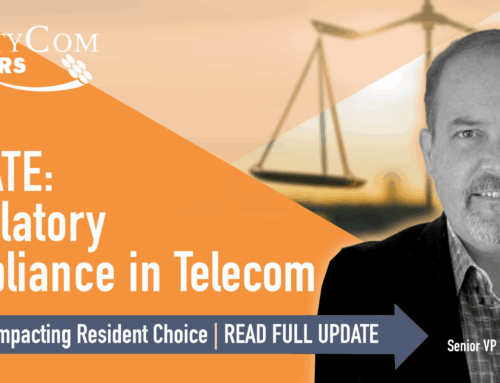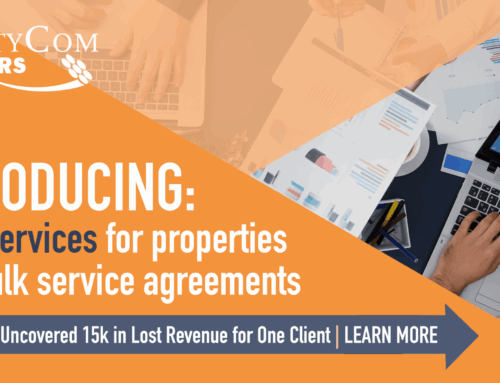By Cristy Boucher
We do our best not to use telecom jargon in our memos and conversations with our clients and partners, but you’ve probably noticed on occasion we slip up! In an effort to help you become a true telecom “nerd” like we are, we’re sharing 11 definitions of popular acronyms (we just had to throw an extra in for good measure!). Always feel free to interject and ask us for any definitions, we are happy to explain and help educate your teams however we can.
“EMA” – abbreviation for Exclusive Marketing Agreement. Exclusive marketing agreements are often in place when there is no competing Service Provider who wants to provide a proposal for Owner consideration. The Owner is agreeing to market only one Service Provider to residents and promote that Service Provider over the other. Additional Service Providers often serve the property and residents can sign up for their services, but only one is being promoted by the on-site team.
“NEMA” – abbreviation for Non-Exclusive Marketing Agreement. These types of agreements allow co-marketing of two or more Service Providers by the Owner. The terms are usually complementary, and terms are coterminous. The Owner has agreed to market two or more Service Providers equally and NOT to promote one Service Provider over the other.
“AO” – abbreviation for Access Only Agreement. These types of agreements provide no on-site marketing right to the Service Provider.
“Bulk Service” – Owner purchased services (i.e. video and/or high-speed internet) that are provided to your residents and for which the Owner is responsible to pay for the contracted services. The Owner “bulk purchases” Internet or Television for the entire property regardless of vacancy, in order to secure a discount versus what a resident could purchase the same service for on their own. The Owner provides the service as an amenity to residents or charges the resident a fee for the cost and administration of the service.
“Retail Service” – Resident pays for services directly from their Service Provider of choice for services and speeds they want (just like you would at a single-family home)
“LEC” – abbreviation for Local Exchange Carrier, a more sophisticated word for the telephone company (such as AT&T and Verizon). These Service Providers have traditionally delivered their services via copper systems versus a coax system that a cable company would use. These Service Providers generally are upgrading to serve over a fiberoptic network today.
“MSO” – abbreviation for Multiple Systems Operator, again a more sophisticated word for the cable company (such as Comcast, Cox and Charter). These Service Providers traditionally deliver service via coax systems using RG-59/RG-6/RG-11 These Service Providers generally are upgrading to serve over a fiberoptic network today.
“FTTU” – acronym for Fiber to the Unit, signifying the property has fiber optic wiring all the way to the apartment (typically terminating in the media cabinet or smart panel in a closet). This means the end-user and resident can purchase up to Gigabit (1,000 Mbps) Internet speeds, or higher in some markets. Gigabit speeds are available from many cable companies using traditional coax wiring, so fiber is not the only wiring that can provide upgraded speeds and services.
“TMR” – abbreviation for Telecom Management Report. This is an internal report RealtyCom provides to our clients on a monthly, quarterly or semi-annual basis outlining all projects RealtyCom is actively working on. Usually these TMR’s are paired with a conference call with your Client Account Manager here at RealtyCom so we can provide a status update. The TMR covers items from acquisition due diligence, working projects/contracts, active RFP’s, special projects, revenue reports, dispositions and more.
“WAP” – Wireless Access Point. A device that distributes wireless “Wi-Fi” service throughout the property or in building common areas (or both). Same concept as the wireless modem you might have in your home.
“BOD” – Basis of Design. Sometimes referred to as a Scope of Work, it shows the low voltage wiring and where the main point of entry and demarcation locations are to bring in new telecom services to your property (where the Service Provider-owned wiring ends and the Owner-owned wiring begins).
If you have any questions about telecom and what we do, feel free to contact us at info@realtycompartners.com.





